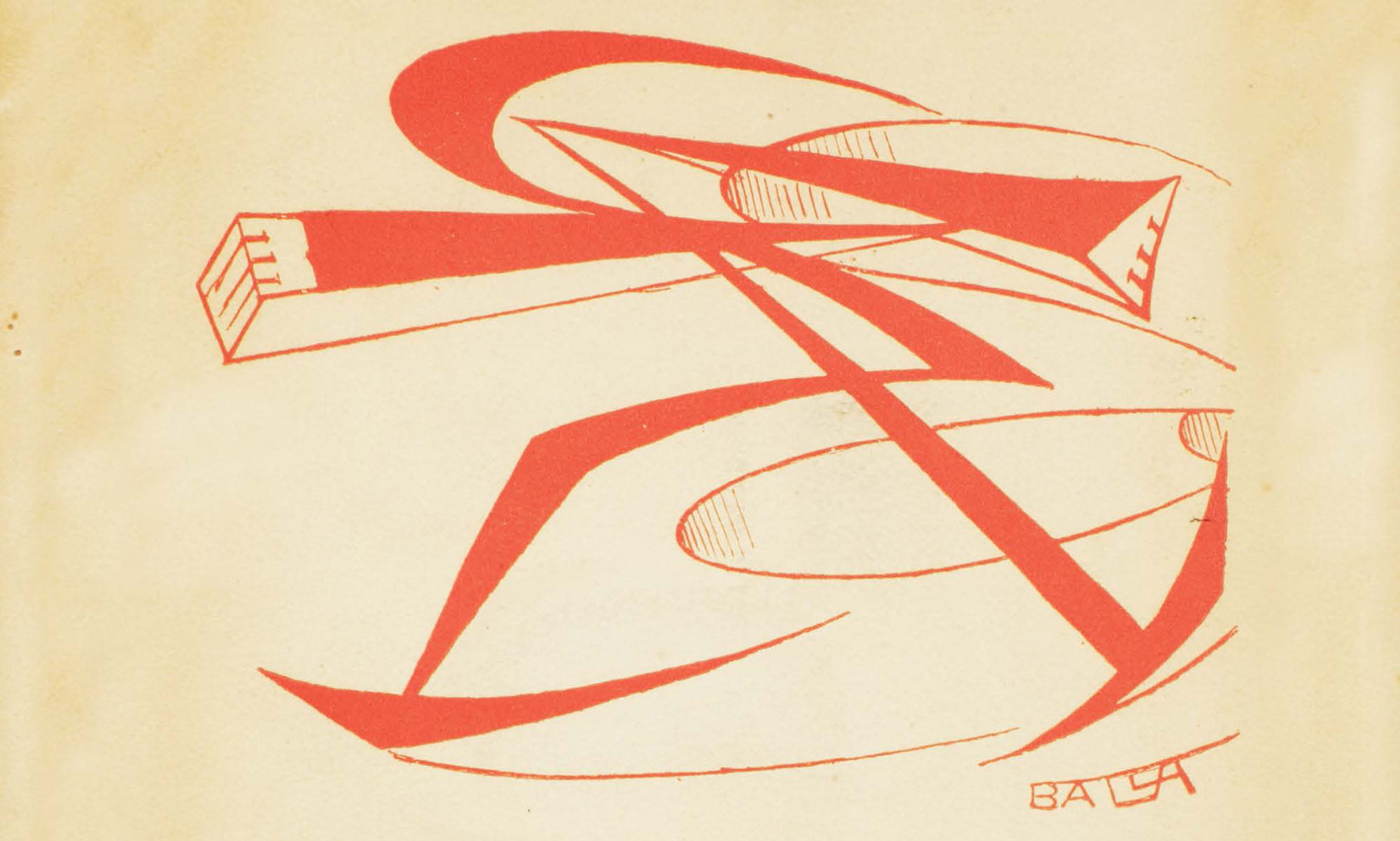by Brian Aguilar, Medjine Bernard, Austin Daniel, Christina Guerrier, and Andrew Yudin
Futurism was an avant-garde artistic movement that swept the nation of Italy during the early 20th century. Its goal was to produce an art and a culture that would embrace modernity, and break away from the traditional subjects and styles of the Italian art of the past. The complex compositions and joyful colors found in the movement’s artworks represent the desire for rebellion of a new generation of Italian intellectuals.
Right from the early days of the futurist movement, in 1909, its affiliates sought to exalt technology as a positive force of modernity, worthy of artistic representation. When penning the Founding Manifesto of Futurism, futurist leader Filippo Tommaso Marinetti praised technology in provocative terms: “We affirm that the world’s magnificence has been enriched by a new beauty: the beauty of speed. A racing car whose hood is adorned with great pipes, like serpents of explosive breath—a roaring car that seems to ride on grapeshot is more beautiful than the Winged Victory of Samothrace.”
Our concern for this essay is to explain how futurist artists incorporated ideas, images, and aspects of technology into their artworks. They did so in a variety of media, such as photographs, photomontages, architectural drawings, and other avant-garde solutions. Many of the futurists concerned with technology centered their artworks around the subjects of aviation, modern architecture, and industry. Some artists placed an emphasis on the concepts of speed and mechanical motion in their projects, while others gave a more abstract representation of technological matters.
Filippo Masoero, for instance, was an Italian photographer influenced by the futurist movement. His photographs frequently focused on aviation, as he wished to emphasize how airplanes embodied the futurist celebration of motion and speed. An example of such a photograph is an Aerial Panorama of Rome from the 1930s (Figure 1). The image features a snapshot of Italian buildings, shot from a high angle. The framing of the shot places the viewer on the airplane alongside the photographer, intent on a daring dive over an urban landscape. The long shutter speed Masoero employed creates a blur and radial lines pointing at the center of the image, with the purpose of conveying the speed and motion of a diving aircraft. While we do not see any airplane, the photographer celebrates technology by capturing the acrobatic gestures and violent sensations modern means of transportation could make possible.
The futurist interest in technology also affected the work of the architects affiliated with the movement, who demonstrate a keen desire to design buildings that could incorporate advanced technological solutions. Virgilio Marchi’s 1919 Stazione e deposito, a sketch for a multi-purpose transportation hub, emphasizes the architect’s confidence in the role of electricity thanks to the many power lines that cross the drawing horizontally. Furthermore, the project highlights Marchi’s early interest in the concept of modular design: the repetition of windows and partition walls in the transportation hub points to the simplicity of its structure and to its possibilities of expansion, which would be easily achievable thanks to its prefabricated modular units.
While futurist artists like Masoero glorified technology that was currently available, and architects like Virgilio Marchi sketched a technological world in reach, Enrico Prampolini’s art engaged in a dreamier and pseudoscientific discourse on what technology could be. Prampolini’s art often bordered the concept of Cosmic Futurism. In the advertising brochure he designed for a filmic adaptation of Rossum’s Universal Robots (Figure 3), Prampolini envisioned a universe of robotics and automation that borders on science fiction. Prampolini’s near space-age vision of technology is clearly depicted in this image: the figure on the right depicts a humanoid robot with a body and arms, while the geometric and mechanical contraption on the left has many round elements that recall planets and moons. Prampolini’s penchant for technology and flight did not stop with airplanes, but rather extended to space and to the vastness of the universe.
In conclusion, it is fair to claim that Futurism saw a great artistic potential in the world of technology. From the intellectual leader of the group, Filippo Tommaso Marinetti, to its many affiliates in the fields of painting, photography, architecture, and design, everyone in Futurism explored the artistic side of industrial modernity. Technology gave these Italian artists an outlet for expressing their enthusiasm and fears over themes such as progress, speed, movement, power, but also nationalism and sociopolitical pros and cons of robotic automation. The influence of the futurist artistic approach to technology is widespread: it affected artists in countries like the United Kingdom, the Soviet Union, the United States, France, and Germany.








